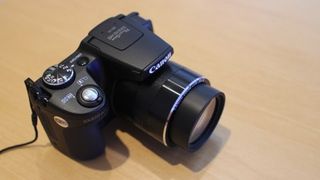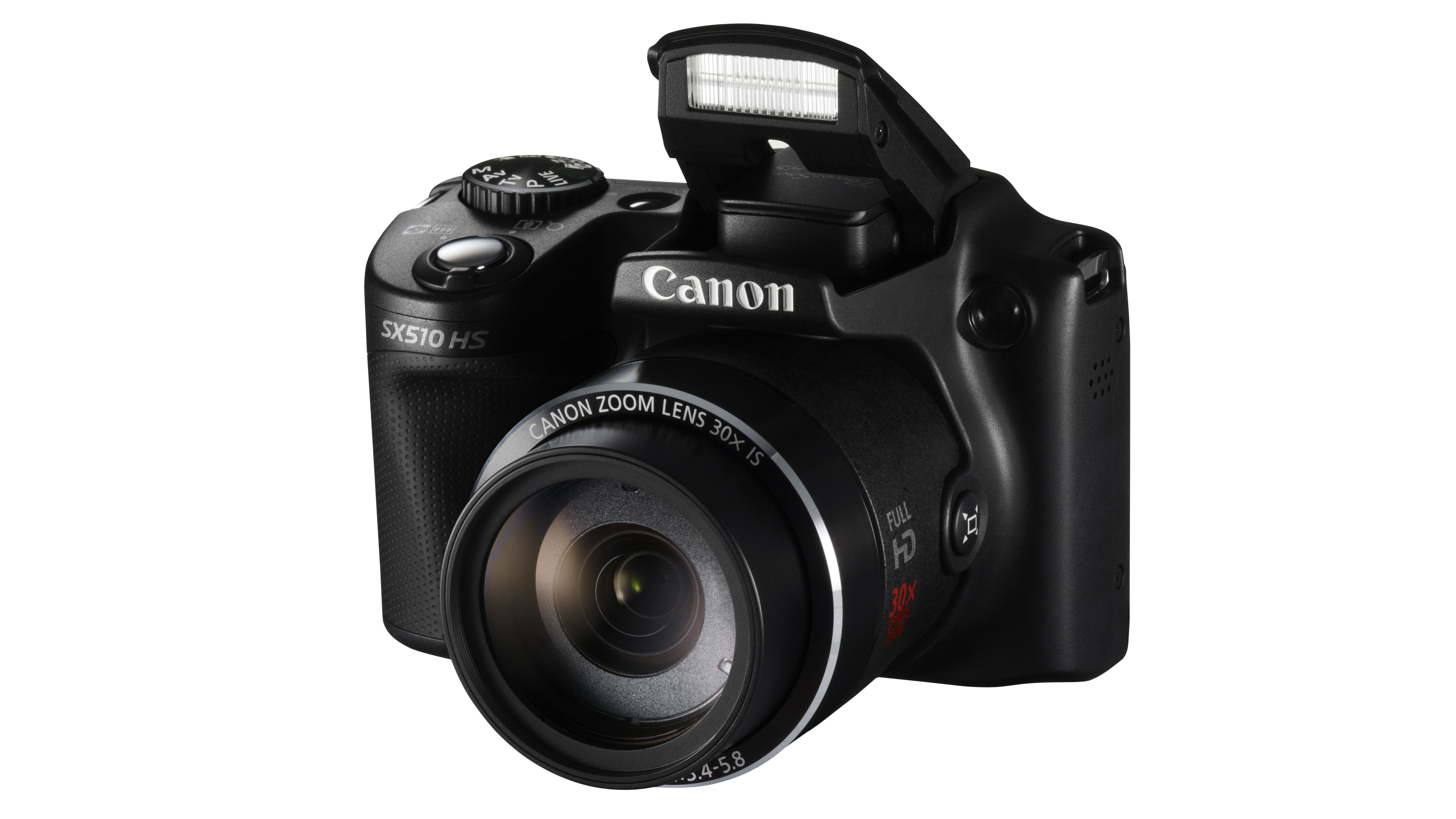TechRadar Verdict
Even though the zoom range is the clear star of the show, what really shines about the Canon SX510 HS is its flexibility. Pictures are of good quality and although images get a little noisy at higher sensitivity settings, details are retained fairly well.
Pros
- +
30x optical zoom
- +
Built in Wi-Fi
- +
Full manual control
Cons
- -
No raw shooting
- -
Can't set AF point
- -
No touchscreen
Why you can trust TechRadar
Last year's Canon PowerShot SX500 IS was hailed as the smallest 30x optical zoom camera on the market, and it was certainly impossible to deny that it packed a whopping lens and the pixels to support it. While it was generally well received, there were a few areas where quality fell foul of quantity. That being the case, we were excited to get our hands on the Canon SX510 HS, contender to the tiny-but-mighty crown.
The two cameras are outwardly similar and share the same great 30x optical zoom, with a maximum effective focal length of 720mm. Further expandable to 60x with Canon's ZoomPlus digital zoom technology, the equivalent of 1440mm, you shouldn't find any problems snapping long range subjects. While it can't boast the same 50x reach as the range-leading Canon SX50 HS, it offers more than enough reach for most situations in a package almost half the size.

There are a number of major improvements under the SX510's hood, and the foremost of these is the new 12.1 million pixel CMOS sensor. The Canon SX500 IS featured a 16 million pixel CCD sensor and this change hopefully reveals a major shift towards better image quality. The new sensor has Canon's HS (short for High Sensitivity) system, which should make it far better at handling low light photography. Although the included DIGIC 4 processor is now two generations old, we know it to be a good performer in other cameras.
The SX510 also features the same three-inch, 461k-dot LCD screen as its forebear, which is starting to lag behind the competition in terms of resolution, with many compacts now packing 920k-dot or higher displays.
Intelligent IS
As with its predecessor, the Canon SX510 features Canon's Intelligent IS technology, which has proven itself to be equal to the task of keeping images stable, even with the long focal length offered by this lens. As well as a powerful IS system, the camera also features a raft of autofocus options including full manual focusing. Tracking options including automatic face detection allow you to keep moving subjects in focus while continuous and servo options help save time spent refocusing.
A wide range of imaging modes are included, with aperture and shutter priority modes as well as full manual control. Scene Mode includes options for low light shooting and portraits, while a range of creative filters provide imitation toy camera and fisheye effects. Flexible tools such as reduced resolution high speed shooting and face triggering give you plenty of options for any situation.
One of the hardest parts of telephoto photography is maintaining framing, especially when shooting moving subjects. The Zoom Framing Assist function, accessed via an easy to reach button on the size of the lens, aims to make reframing as easy as possible by enabling you to quickly zoom in and out. One press while zoomed in will quickly zoom out to a wide view, with a handy framing window that matches the approximate telephoto view. Let go of the button and the lens will zoom right back to your initial range, allowing you to quickly search for subjects. What's more, when a subject is detected, the camera will attempt to keep it relatively the same size in the frame at all times, which is great for moving subjects.
Moving pictures
With most modern compacts featuring full HD movie recording; the Canon SX500 offered a disappointing maximum resolution of 720p. Thankfully, this upgraded model has received a much-needed boost, bringing it in line with what is quickly becoming the industry standard. Although there are no options to adjust frame rates at HD resolutions, a high-speed mode is offered, with up to 240 frames per second available, at the cost of a cut to resolution.
A welcome addition to this model is wireless connectivity, something that is becoming more and more common in modern compact and bridge cameras, making transferring files and printing entirely computer free. The wireless connection also allows you to share GPS information from a mobile device in order to automatically tag images with location information, which adds even more attraction to an already traveller-friendly camera.

